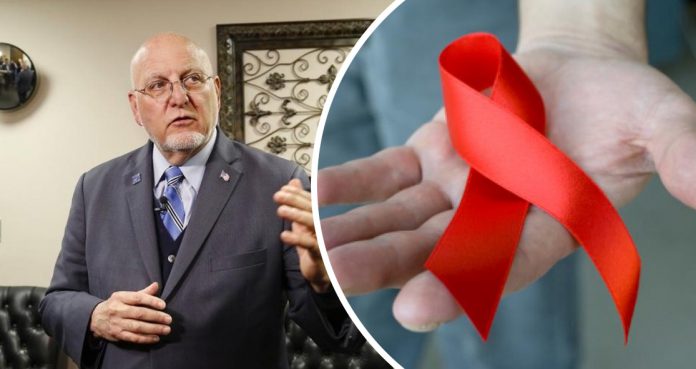Dr. Robert Redfield, the American virologist and the director of the Centers for Disease Control and Prevention (CDC), paid a visit to OU Medical Center’s HIV clinic and promised to bring big things in order to fight against the fatal disease.
His visit was associated with his invitation to speak at the OU College of Public Health. He discussed his work on HIV/AIDS in the initial days of the national HIV epidemic.
The dean of OU College of Public Health said; “We have some really outstanding expert physicians in OU medicine who focus on this and it’s going to highlight the way that our Medicine and the Health Sciences Center partners with for example the [Oklahoma State Department of Health] and other community groups in an organized partnership way to again attack this problem.”
As far as the HIV epidemic is concerned, Oklahoma is currently among the ten states, which has now been chosen to take part in a new national program to end the spread of HIV/AIDS in the next 10 years. The program came into existence through a promise made by President Trump.
The program calls for nearly $291 million to be provided to seven states and 48 counties, mainly urban areas.
Dr. Redfield said Alabama, Arkansas, Kentucky, Mississippi, Missouri, South Carolina, and Oklahoma were picked because of their rural population as well as the scanty access to health care.
The CDC director said, “We felt that if we get a great program that works in cities how does that help our nation to really bring an end to the aids epidemic. We needed to pick some rural environments.”
The virologist explained that in many rural communities, the biggest challenge to putting an ending to the spread of HIV/AIDS is ending the stigma attached to diagnosis or simply being tested for the infection. He mentioned that national health agencies recommend a comprehensive statewide program and education in schools.
“We believe that comprehensive program includes pre-exposure prophylaxis, it includes sex education, condoms, it includes safe syringe programs,” he added.
Lawmakers of Oklahoma are debating whether to bring improvements in the state’s sex education curriculum on HIV/AIDS, whereas in some areas the curriculum has not been updated since 1980.
In the OU Medical Center’s HIV clinic alone, physicians come across nearly 100 patients a day.
Dr. Redfield started treating HIV/AID patients, before it actually has an official name, watching patients and close friends die with nothing to be done. On Tuesday, he hoped that the tide might be turning in a decade long fight to end the HIV epidemic. The virologist explained that the plan is to reduce the number of infected Americans by approximately 75 percent in the next five to seven years and be within 90 percent eradication within 10 years. He said, “It’s not going to happen in a day. It’s going to take a decade.”























